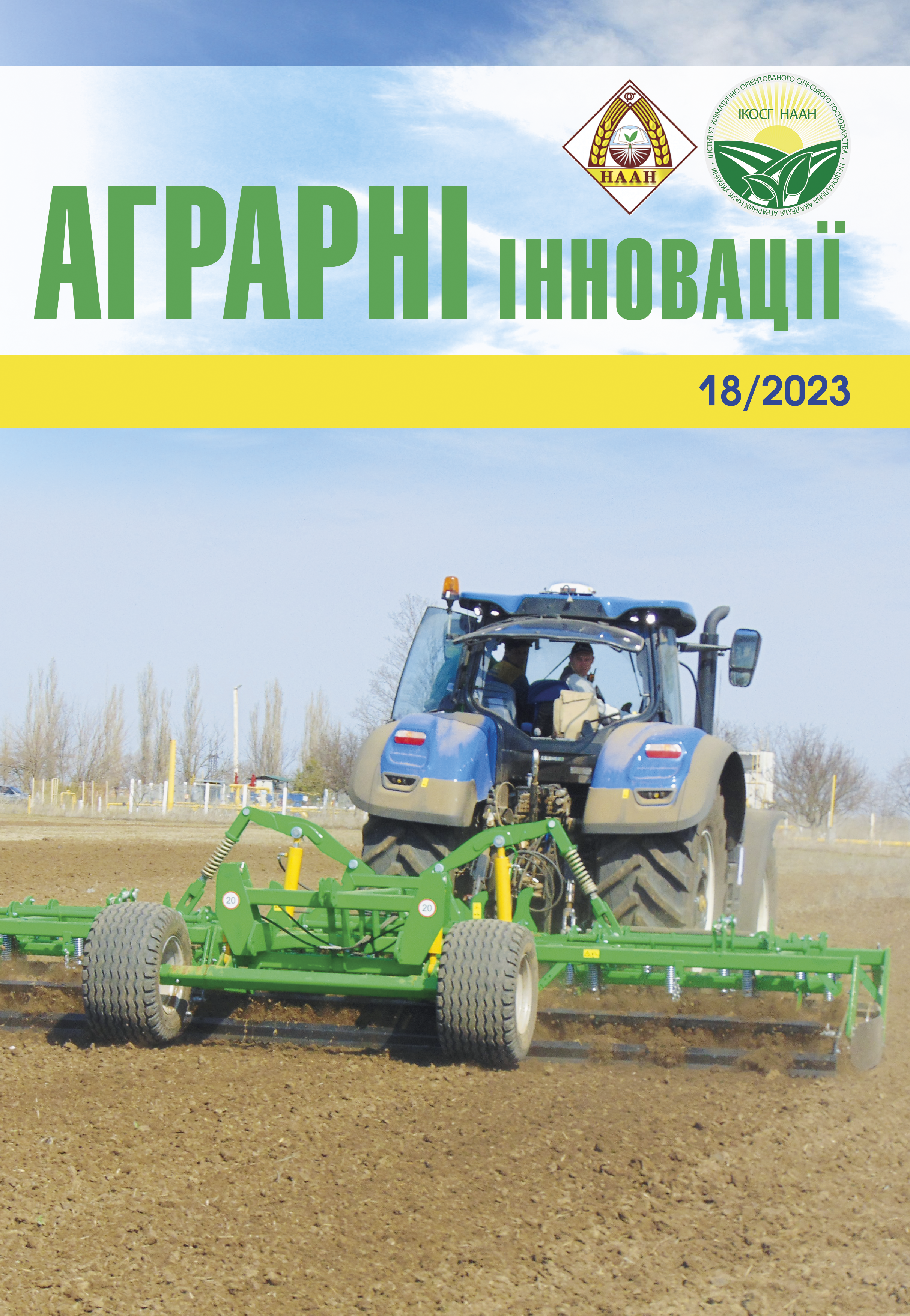THE INCONSISTENCY OF THE MAIN AND OTHER VARIETIES IS A SIGN OF EXPANDING VARIETIES OF HAZELNUTS IN TRANSCARPATHIA
Abstract
Today, more than 20 countries are engaged in the cultivation of hazelnuts. The production of its nuts is about one million tons. Hazelnut ranks third among nut crops in world production. Hazelnut grows and bears fruit for 40 years, its yield is up to 4 tons per hectare. Therefore, the garden brings a guaranteed income to farms for a long time. When planting a garden, it is important to carefully choose varieties and pay attention to the quality of seedlings. The hazelnut market is just being formed. To cover the domestic needs of the country, at the current level, it will take at least 20–25 years, not to mention the possibility of exporting to Europe. Despite the expansion of areas under hazelnuts in Europe and Poland, the price of the nut and its consumption increases every year, thanks to its economic and medicinal properties. The purpose of the work was to develop a methodology for the study and identification of hazelnut plants based on the morphological characteristics of the leaf and to test it on the example of hazelnut varieties Catalan, Trebizond 1, Mortarella and Tonda di Giffoni. During the selection of leaf samples for the characterization of hazelnut varieties, 4–10 well-developed leaves were collected from the middle part of the crown, from different sides along the perimeter. Leaf plates were scanned, and their images were analyzed for similarities and differences of both the whole leaf plate and its individual parts (apex, base, teeth). Leaf length, width, petiole length, and leaf blade area were measured in a computer program. According to the measurement data, the area of the leaf, the coefficients of the shape of the leaf plate as the ratio of its width to the length and the ratio of the length of the petiole to the length of the leaf plate were determined – in absolute terms and in points on a 5-point scale. The general shape of the leaf, the shape of the top, the base, teeth of the 1st-2nd and 2nd-3rd orders were evaluated in points. There are 5 gradations according to the shape of the leaf plates: oval leaf plate – 1 point; expanded in the lower part (oval-egg shape) – 2 points; rounded – 3 points; expanded in the upper part (oval-inverted-egg shape) – 4 points; wide-round – 5 points. According to the shape of the top of the leaf, we have established 5 gradations: wedge-shaped pointed – 1 point; round with a pointed tip – 2 points; rounded – 3 points; blunt with a pointed tip - 4 points; notched with a pointed tip – 5 points. According to the shape of the teeth of the 2nd-3rd order, 5 gradations are established: teeth of the 2nd order are weakly expressed, and of the 3rd order are not expressed – 1 point; teeth of the 2nd order are moderately expressed, of the 3rd order are weakly expressed – 2 points; teeth of the 2nd and 3rd orders are moderately expressed – 3 points; teeth of the 2nd and 3rd orders are well expressed – 4 points; teeth of the 2nd order weakly expressed, 3rd – long, well expressed – 5 points. When analyzing 54 main and secondary features, the main ones directly involved in the formation of productivity were established. According to these features, an assessment of hazelnut varieties is given, which indicates the importance of their manifestation as economically useful traits in the formation of productivity. In the midst of a few signs of manifestation on varieties of hazelnuts, a small number of earrings on the flower-bearing stems, as a zagal became 1 to 5 pcs. anomalous size of the cluster of peas, root peas, size of the leaf, veining, pubescence, weeds of fat ridges, generative brunki were molded on some distance, building up to peas).
References
2. Fattahi R. Influence of different pollen sources on nut and kernel characteristics of hazelnut. Scientia Horticulturae. 2014.Vol. 173. P. 15–19.
3. Косенко І. С. Фундук: Прикладна генетика, селекція, технологія розмноження і виробництва: навчальний посібник. Київ : Наукова думка, 2008. 256 с.
4. Косенко І. С. Новий сорт фундука (Corylus domestica Kos. et Opal.) Софіївський 15. Інтродукція рослин, збереження та збагачення біорізноманіття в ботанічних садах та дендропарках: зб. матеріалів доп. учасн. міжнарод. наук. конф. Київ : Фітосоціоцентр, 2015. С. 124–125.
5. Косенко І. С. Внутрішньовидова мінливість і формова різноманітність інтродукованих видів фундука в Україні. Вісник Наукові основи збереження біотичної різноманітності. Сер. Біологія. 2003. Вип. 5 С. 70–73.
6. Савіна О.І., Чекан Д.І., Цвігун Д.О. Особливості формування продуктивності інтродукованих сортів фундука в умовах Закарпаття. Міжвідомчий тематичний вісник Проблеми агропромислового комплексу Карпат. Сер. Агрономія. 2019. Вип. 27–28. С. 84–95.
7. Слюсарчук В. Є. Генетичний потенціал фундука в ДСДЛЦ «Веселі Боковеньки». Лісівнича наука: витоки, сучасність, перспективи : зб. матеріалів доп. наук. конф. Харків : УкрНДІЛГА, 2010. С. 137–139.
8. Ткачук С.О. Методика проведення експертизи сортів рослин групи плодових, ягідних, горіхоплідних, субтропічних та винограду на придатність до поширення в Україні (ПСП) / Київ: ДВТФСУ, 2014. 83 с.






